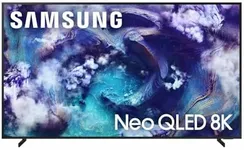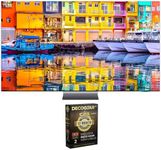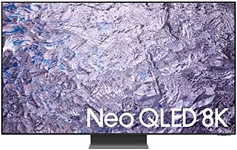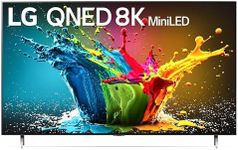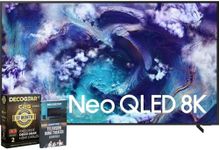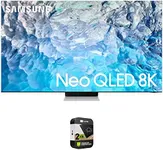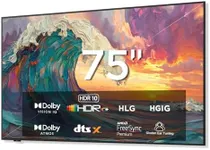Buying Guide for the Best Qled 8 K Tv
Choosing the right QLED 8K TV can be a daunting task, but with the right approach, you can find the perfect model that suits your needs. QLED 8K TVs offer stunning picture quality and advanced features, making them a great choice for anyone looking to upgrade their viewing experience. To make an informed decision, it's important to understand the key specifications and how they impact your overall experience. Here are some essential specs to consider when selecting a QLED 8K TV.ResolutionResolution refers to the number of pixels that make up the picture on the screen. An 8K resolution means the TV has 7680 x 4320 pixels, which is four times the resolution of 4K and sixteen times that of Full HD. This spec is important because higher resolution provides more detail and clarity, especially on larger screens. If you enjoy watching high-definition content or want the best possible picture quality, an 8K resolution is ideal. However, if you primarily watch standard HD content, the benefits of 8K may be less noticeable.
Screen SizeScreen size is measured diagonally from corner to corner and is typically expressed in inches. This spec is important because it affects your viewing experience and how immersive the picture feels. Screen sizes for QLED 8K TVs can range from around 55 inches to over 85 inches. To pick the right size, consider the size of your room and the distance from which you'll be watching. Larger screens are better for bigger rooms and longer viewing distances, while smaller screens are suitable for more compact spaces.
HDR (High Dynamic Range)HDR enhances the contrast and color range of the TV, making the picture more vibrant and lifelike. This spec is important because it improves the overall visual experience, especially in scenes with bright highlights and deep shadows. There are different HDR formats, such as HDR10, HDR10+, and Dolby Vision. If you want the best possible picture quality, look for a TV that supports multiple HDR formats. If you're less concerned about having the latest HDR technology, a TV with basic HDR support will still provide a noticeable improvement over non-HDR models.
Refresh RateRefresh rate refers to how many times per second the TV updates the image on the screen, measured in Hertz (Hz). This spec is important because a higher refresh rate can make fast-moving scenes look smoother and reduce motion blur. Common refresh rates for QLED 8K TVs are 60Hz and 120Hz. If you watch a lot of sports, action movies, or play video games, a higher refresh rate like 120Hz is beneficial. For general TV watching, a 60Hz refresh rate is usually sufficient.
Smart TV FeaturesSmart TV features include built-in apps, streaming services, voice control, and internet connectivity. This spec is important because it enhances the functionality of your TV and allows you to access a wide range of content without needing additional devices. Look for a TV with a user-friendly interface and support for the streaming services you use most. If you enjoy using voice assistants like Alexa or Google Assistant, check for compatibility with these features.
ConnectivityConnectivity refers to the types and number of ports available on the TV, such as HDMI, USB, and Ethernet. This spec is important because it determines how easily you can connect external devices like gaming consoles, Blu-ray players, and sound systems. Make sure the TV has enough HDMI ports for your needs, and consider additional features like eARC for enhanced audio quality. If you plan to connect multiple devices, ensure the TV has sufficient ports to accommodate them.
Audio QualityAudio quality is determined by the TV's built-in speakers and any additional sound technologies it may have, such as Dolby Atmos. This spec is important because good audio quality enhances your overall viewing experience. While QLED 8K TVs often have decent built-in speakers, you may want to consider additional sound systems or soundbars for a more immersive experience. If audio quality is a priority, look for TVs with advanced sound features or plan to invest in external audio equipment.
